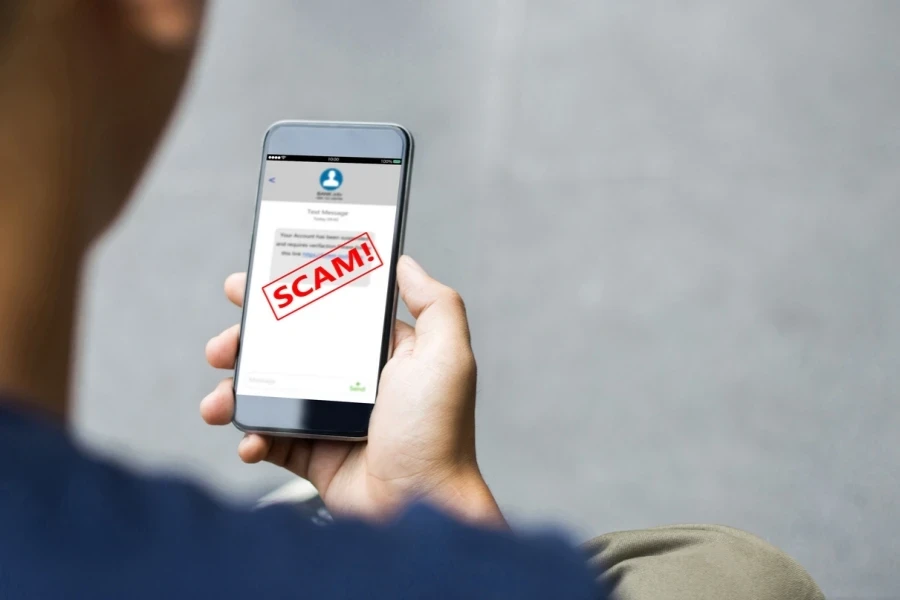Etsy has grown into a massive online marketplace, with millions of buyers and sellers trading handmade, vintage, and one-of-a-kind products daily. But with so many independent vendors, you might wonder: Is Etsy safe? Can you get scammed?
The short answer is that, yes, Etsy is a legitimate platform, but it’s not completely devoid of scams either. Most sellers are honest entrepreneurs running small businesses and crafting high-quality products. However, scammers exist; you could fall for one if you’re not careful.
So, how do you shop safely? This guide will walk you through how Etsy protects buyers, common Etsy scams, how to spot them, and steps to take if you ever get scammed. By the end, you’ll hopefully be better equipped to shop confidently without losing your money (or patience).
Table of Contents
Is Etsy safe to buy from?
5 common Etsy scams and how to avoid them
1. Fake Etsy shops
2. Counterfeit or knockoff products
3. Bait-and-switch scams
4. The “wrong address” scam
5. Off-platform payment scams
What to do if you get scammed on Etsy
Final verdict: Is Etsy safe?
Is Etsy safe to buy from?
Etsy is a well-established company that has been around since 2005. It’s home to millions of independent sellers who offer everything from handmade jewelry to vintage clothing and personalized gifts. The platform has up to 96+ million active buyers and 7.5+ million sellers, making billions in sales annually.
The site itself is secure, and Etsy protects both buyers and sellers. But (and this is important), Etsy is just the middleman. Your purchase is with an individual seller, not Etsy itself. And that’s where things get tricky. Most sellers are great, but a few bad apples can slip through the cracks.

For the most part, Etsy is safe, and offers buyers:
- Secure payments: All payments go through Etsy Payments, PayPal, Apple Pay, or Google Pay, so sellers never see your credit card details
- Etsy Purchase Protection: If your order never arrives or isn’t as described, you may be eligible for a refund
- Seller reviews: Buyers can leave detailed feedback, making it easier to spot reputable shops vs. shady ones
But here’s the thing: Etsy has millions of sellers, making it impossible for the platform to catch all bad players. That means scammers can open shops, make quick sales, and disappear. So, the real question isn’t, “Is Etsy safe?” It’s, “How can you tell if a seller is legitimate?”
5 common Etsy scams and how to avoid them
Even though most Etsy sellers are honest, there are some common scams to watch out for. The good news is they’ll become easy to spot when you can spot the red flags:
1. Fake Etsy shops

Some scammers create fake stores that look real but never ship the products. They may take your money, ignore your messages, and disappear before Etsy shuts them down.
🚨 Warning signs:
❌ Brand-new shop with no reviews
❌ Products that look like stock photos (reverse image search can help spot stolen images)
❌ No return policy or refund information
❌ Prices that seem too good to be true
Additionally, these fake shops may personally message you, asking for your personal data or credit card information because of a “problem” with the order.
✅ How to avoid it:
✔️ Only buy from shops with good reviews and a history of sales
✔️ Look for a “Star Seller” badge, as Etsy awards it to reliable sellers
✔️ Be wary of super cheap prices on high-end or name-brand items
✔️ Don’t give any seller personal information, and keep everything related to your order on the Etsy platform
2. Counterfeit or knockoff products
Some sellers mislead buyers by claiming items are handmade, vintage, or designer when, in reality, they’re mass-produced knockoffs.
🚨 Warning signs:
❌ Designer goods sold at suspiciously low prices
❌ Generic descriptions (no real details about materials or craftsmanship)
❌ No actual photos, only generic product images
✅ How to avoid it:
✔️ Use Google Reverse Image Search to check if the photos are stolen
✔️ Read reviews carefully to see what real buyers say
✔️ If an item is way cheaper than it should be, it’s probably fake
3. Bait-and-switch scams

You order a beautiful, high-quality item, but it looks nothing like the listing when it arrives. Cheap materials, wrong colors, incorrect sizes, you name it, you’ve likely been the victim of a classic bait-and-switch scam.
🚨 Warning signs:
❌ Vague or misleading product descriptions
❌ Reviews mentioning differences between the listing and the product
❌ No clear return policy
✅ How to avoid it:
✔️ Look at customer photos in reviews – not just the seller’s photos
✔️ If the description is too vague, ask the seller for specifics
✔️ Read reviews to see if other buyers had the same issue
4. The “wrong address” scam
This one is sneaky. Some scammers ship a package to the wrong address on purpose, but still mark it as “delivered.” When you complain, they’ll say it was delivered, even though it never reached your doorstep. Usually, they’ll send it somewhere they can easily retrieve it.
🚨 Warning signs
❌ Seller won’t confirm your shipping address
❌ Tracking number shows the package was delivered but not to you
✅ How to avoid it:
✔️ Double-check your shipping details before placing an order
✔️ If tracking looks suspicious, contact Etsy Support immediately
5. Off-platform payment scams

Some sellers try to convince buyers to pay outside of Etsy (via PayPal, Venmo, or gift cards). They may even offer a discount to get you to send money directly. But always remember that Etsy covers all purchases made on its platform with Purchase Protection, so scammers will try to avoid the refund process since Etsy can’t track or help with payments made outside its platform.
🚨 Warning signs:
❌ Seller asks for payment outside of Etsy
❌ They promise a lower price if you pay directly
✅ How to avoid it:
✔️ NEVER pay outside of Etsy, as off-platform purchases aren’t protected
✔️ If a seller asks for direct payment, report them to Etsy immediately
What to do if you get scammed on Etsy

If you run into a problem, don’t panic. Try the following options first:
1. Contact the seller first. Many legitimate sellers may have simply made a mistake or are willing to offer refunds.
2. Open a case with Etsy support if the seller ignores you or refuses to help. Here’s how:
- Go to Etsy’s Resolution Center
- Provide screenshots and proof of the issue
- Etsy may issue a full refund if they rule in your favor
3. File a chargeback with your bank. Sometimes, Etsy won’t refund you, so you may need to call your bank or credit card company to dispute the charge.
4. Always report the seller. If you suspect fraud or have been scammed, report the shop to help protect other buyers.
Final verdict: Is Etsy safe?
Yes, Etsy is safe – but it helps to know how to shop smart. Most sellers are honest and provide great products. However, nefarious sellers can often be spotted by a number of telling signs, such as new, inactive, or unprofessional Etsy account profiles, suspicious product descriptions, “too good to be true” prices, and may pressure you to pay off-platform.
A scam seller may also use fake images, external links, fake reviews (or have negative ones), give delayed/defensive responses, have expensive delivery costs, and ask for personal information. If you spot any of these signs, it’s best to simply avoid such sellers and opt instead for those you can count on.



